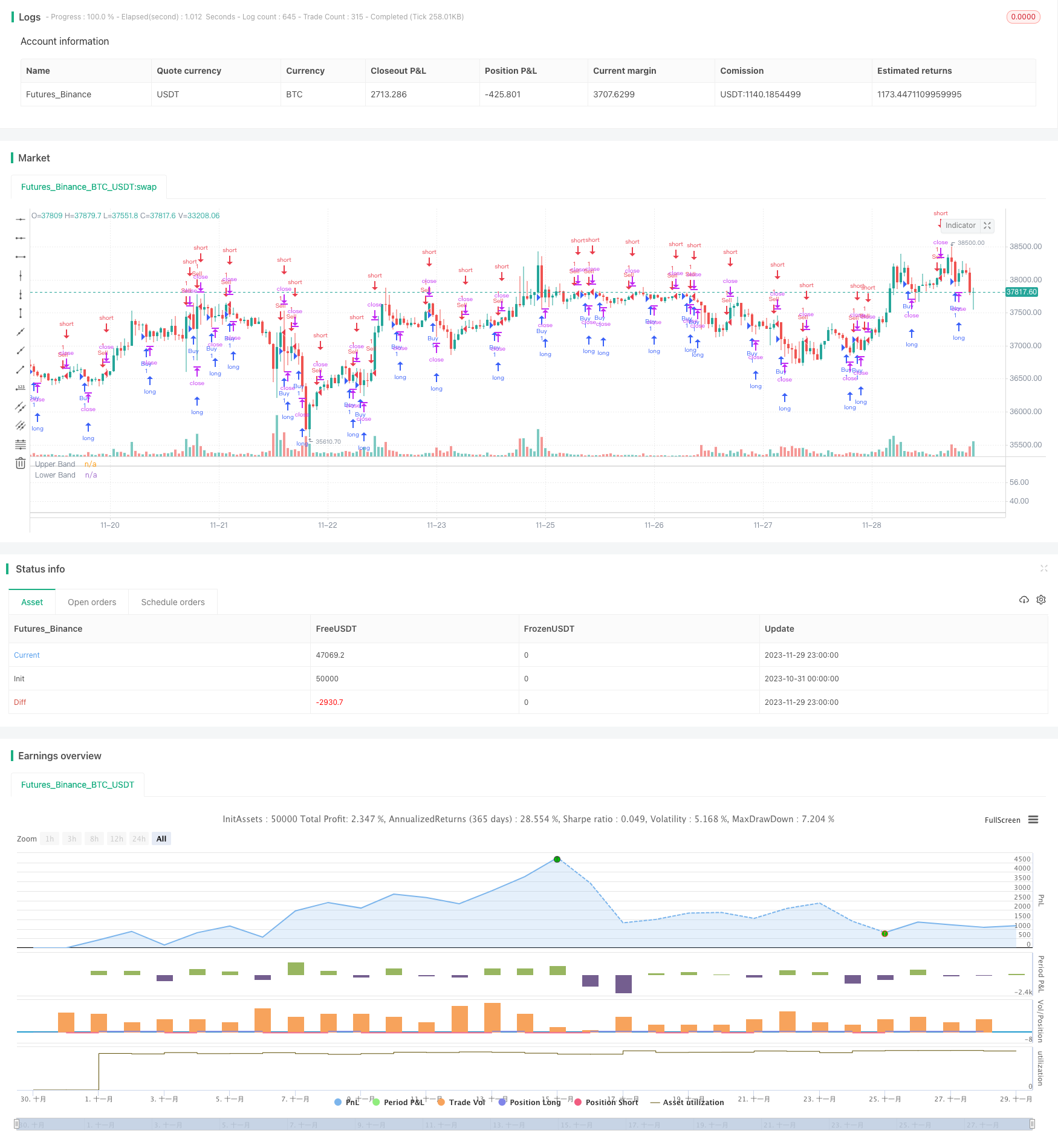
概述
本策略名为“双均线策略”,其核心思想是同时利用相对强弱指标(RSI)和移动平均线(MA)这两个指标来产生交易信号。具体来说,当RSI线从上向下跨过MA线时生成买入信号;当RSI线从下向上跨过MA线时生成卖出信号。该策略相对简单,但通过结合两个不同类型的指标,可以有效减少假信号,提高信号的可靠性。
原理
双均线策略的基本逻辑是:
- 计算RSI值,以反映股票的超买超卖情况
- 计算MA值,以判断价格平均趋势
- 当RSI从高点下降,由超买区域进入超卖区域,并下穿MA时,产生买入信号
- 当RSI从低点上升,由超卖区域进入超买区域,并上穿MA时,产生卖出信号
以上交易信号发生时,我们会在图表上画出相关标记,方便视觉判断。这就是双均线策略的整体工作流程。
优势
双均线策略最大的优势在于能有效结合趋势指标和超买超卖指标,使交易信号更加可靠。具体来说,主要有以下几个方面的优势:
减少假信号。RSI和MA的结合使用,可以相互验证信号,避免单一指标产生的假信号。
提高胜率。相比单一RSI或MA策略,双均线策略可以获得更高的盈利机会。
适应性强。该策略仅用两个参数,操作简单,使用成本低,适合不同市场环境。
容易优化。通过调整RSI和MA的周期参数,可以方便优化,适应更多品种。
风险
尽管双均线策略有许多优点,但在实际应用中也不能完全避免风险。主要的风险包括:
MA采用了历史均价,可能滞后于最新价格变化。
RSI可能出现假突破的情况,产生错误信号。
无法适应快速变化的趋势市场,容易止损。
参数设置不当也会大幅影响策略表现。
对此,我们主要从以下几个方面进行风险控制:
采用自适应MA,根据最新价格变化调整周期参数。
增加止损机制,控制单笔亏损。
优化参数,选择最佳参数组合测试。
采用步进止损,锁定部分利润,降低风险。
优化方向
针对双均线策略可能存在的问题,我们考虑从以下几个维度进行优化:
利用自适应MA代替普通MA,可以更快捕捉价格变化趋势。
增加成交量指标的验证,避免假突破。例如收盘价与成交量齐齐上涨时才买入。
结合其他指标 filt过滤无效信号。例如MACD 或KD指标的 verifies 。
优化参数设置区间,寻找最优参数组合。可以通过回测寻找策略Highest 盈利的参数区间。
采用机器学习技术进行参数自适应优化。让策略能够根据实时市场状况选择最优参数。
通过以上几点优化,有望大幅提升双均线策略的实盘表现。
总结
双均线策略整合了RSI和MA两个指标的优点,通过二者配合,可以产生更加准确和可靠的交易信号。相比单一技术指标策略,双均线策略具有信号准确度高、假信号少、容易优化等优势。但也不能完全避免误操作风险,我们提出了一些具体的风险控制手段。此外,这一策略也存在可以继续优化的维度,若结合自适应指标、其他辅助验证指标、参数寻优等手段,有望进一步提高策略收益率。总体来说,本策略为量化交易提供了一个简洁实用的技术分析方案。
/*backtest
start: 2023-10-31 00:00:00
end: 2023-11-30 00:00:00
period: 1h
basePeriod: 15m
exchanges: [{"eid":"Futures_Binance","currency":"BTC_USDT"}]
*/
//@version=4
strategy(title="RSI + MA", shorttitle="RSI + MA")
reverseTrade = input(false, title = "Use Reverse Trade?")
lengthRSI = input(14, minval=1, title="RSI Length")
sourceRSI = input(close, "RSI Source", type = input.source)
showMA = input(true, title="Show MA")
lengthMA = input(9, minval=1, title="MA Length")
offsetMA = input(title="MA Offset", type=input.integer, defval=0, minval=-500, maxval=500)
up = rma(max(change(sourceRSI), 0), lengthRSI)
down = rma(-min(change(sourceRSI), 0), lengthRSI)
rsi = down == 0 ? 100 : up == 0 ? 0 : 100 - (100 / (1 + up / down))
ma = sma(rsi, lengthMA)
plot(showMA ? ma : na, "MA", color=color.blue, linewidth=2, style=0, offset=offsetMA)
plot(rsi, "RSI", color=#9915FF, linewidth=1, style=0)
band1 = hline(70, "Upper Band", color=#C0C0C0, linestyle=2, linewidth=1)
band0 = hline(30, "Lower Band", color=#C0C0C0, linestyle=2, linewidth=1)
fill(band1, band0, color=color.new(#9915FF,95), title="Background")
buy = reverseTrade ? rsi[1] < ma[1] and rsi > ma : rsi[1] > ma[1] and rsi < ma
sell = reverseTrade ? rsi[1] > ma[1] and rsi < ma : rsi[1] < ma[1] and rsi > ma
strategy.entry("Buy", true, when = buy)
strategy.entry("Sell", false, when = sell)